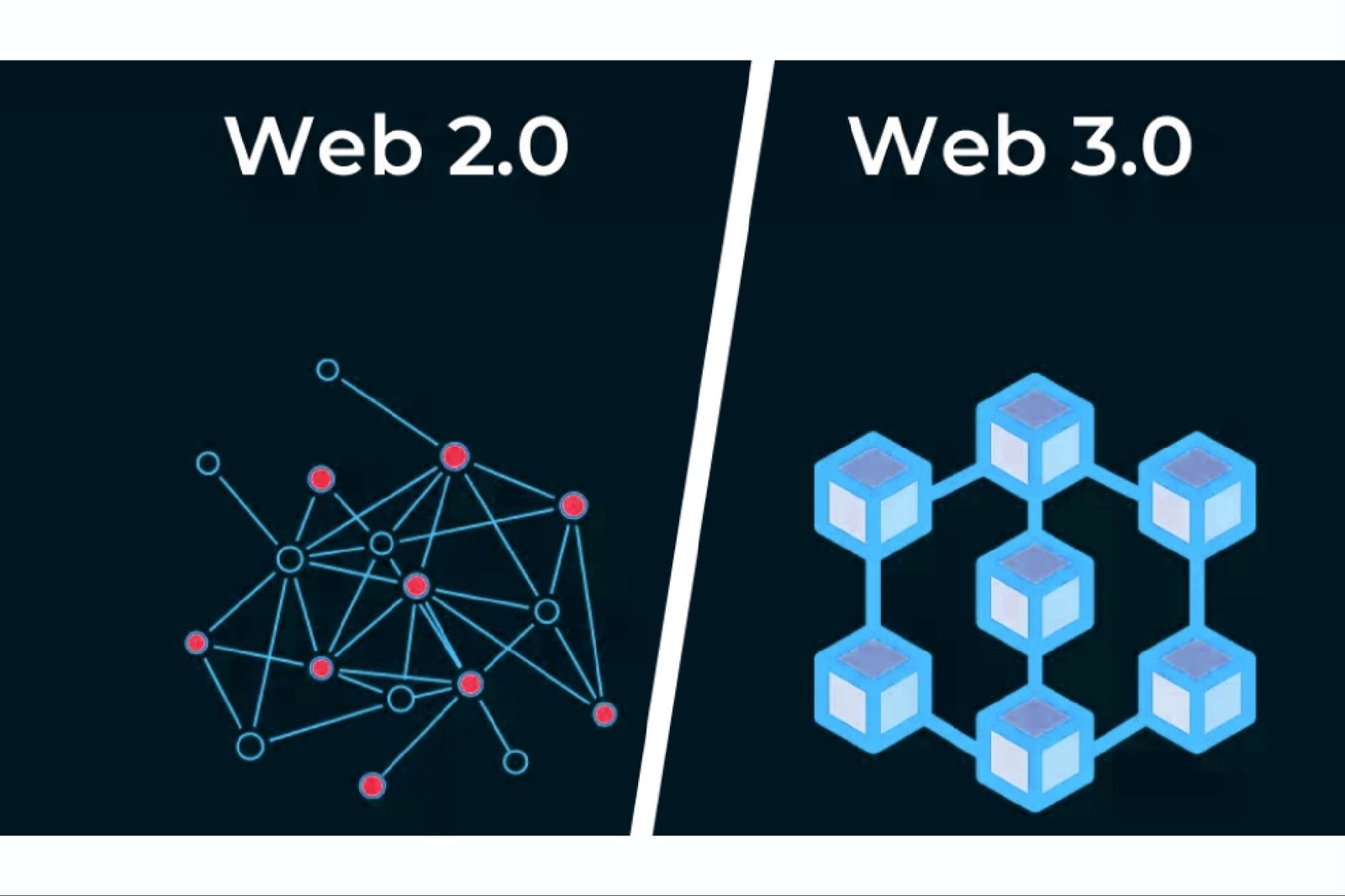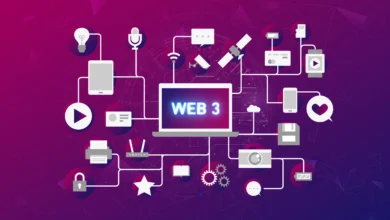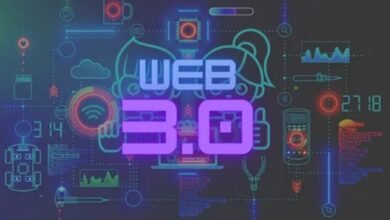
Web3 technology stands at the forefront of this revolution. As we navigate through 2025, the narrative surrounding Web3 has fundamentally changed. Gone are the days when decentralized technology was merely a buzzword thrown around in tech conferences and crypto forums. Today, Web3 represents a tangible shift in how businesses operate, how individuals interact online, and how digital ownership is conceptualized across multiple industries.
The journey from speculative excitement to practical implementation has been neither linear nor simple. Early adopters faced skepticism, technological limitations, and regulatory uncertainties that threatened to derail the entire movement. However, the persistent innovation within the blockchain ecosystem and the growing demand for transparent, user-controlled digital experiences have catalyzed a transformation that few could have predicted. In 2025, we’re witnessing the maturation of Web3 from an experimental concept into a legitimate framework for building the next generation of internet applications.
This evolution reflects a broader understanding that sustainable technological advancement requires more than just revolutionary ideas—it demands practical solutions that address real problems for everyday users. The current state of Web3 adoption demonstrates that the technology has finally crossed the chasm from early enthusiasts to mainstream audiences, driven by improved user experiences, clearer regulatory frameworks, and undeniable value propositions that resonate across diverse sectors.
The Web3 Evolution
The transformation of Web3 from theoretical promise to practical reality represents one of the most significant technological shifts of the decade. To appreciate where we are today, it’s essential to understand the foundational principles that have guided this evolution. Decentralized networks were initially conceived as alternatives to centralized platforms that controlled user data, monetized personal information, and created walled gardens that stifled innovation and competition.
The early days of Web3 were characterized by ambitious visions that often outpaced technological capabilities. Developers and entrepreneurs promised revolutionary changes that would democratize the internet, eliminate intermediaries, and redistribute power to individual users. While these goals were admirable, the infrastructure needed to support such ambitions simply didn’t exist in a mature form. Scalability issues, prohibitive transaction costs, and complex user interfaces created significant barriers that prevented widespread adoption beyond dedicated crypto enthusiasts and tech-savvy early adopters.
What distinguishes 2025 from previous years is the convergence of several critical developments. Layer-2 scaling solutions have dramatically improved transaction throughput while reducing costs to levels that make microtransactions economically viable. User interface design has evolved to the point where interacting with decentralized applications feels as intuitive as using traditional web platforms. Perhaps most importantly, the focus has shifted from purely speculative applications toward solving concrete problems in sectors ranging from supply chain management to digital identity verification.
The maturation process has also involved a necessary reckoning with the limitations and appropriate use cases for blockchain technology. Not every application benefits from decentralization, and the industry has become more discerning about where distributed ledger technology adds genuine value versus where it introduces unnecessary complexity. This more nuanced understanding has actually accelerated meaningful adoption by directing resources and innovation toward areas where Web3 truly excels.
Real-World Applications Driving Adoption
The most compelling evidence of Web3’s transition from hype to reality lies in the diverse array of practical applications now functioning in production environments. These implementations span industries and use cases, demonstrating that decentralized technology offers tangible benefits beyond theoretical advantages.
Financial Services and Decentralized Finance
The financial sector has emerged as one of the primary beneficiaries of Web3 innovation. Decentralized finance platforms have evolved from experimental protocols into sophisticated financial infrastructure serving millions of users globally. Unlike the speculative frenzy that characterized earlier periods, today’s DeFi ecosystem focuses on providing accessible, transparent financial services to populations underserved by traditional banking systems.
Cross-border payments represent a particularly powerful use case where blockchain solutions have demonstrated clear superiority over legacy systems. Traditional international transfers can take days to settle and incur substantial fees, creating friction in global commerce and remittances. Web3-powered payment networks now facilitate near-instantaneous transfers at a fraction of traditional costs, with the added benefit of full transparency and auditability. Businesses engaged in international trade have increasingly adopted these solutions not because of ideological commitment to decentralization, but because they simply work better and cost less than conventional alternatives.
The integration of smart contracts into lending, borrowing, and yield generation has also matured considerably. Early DeFi protocols suffered from security vulnerabilities and economic design flaws that resulted in high-profile hacks and cascading liquidations. Today’s platforms incorporate lessons learned from these failures, implementing robust security audits, insurance mechanisms, and more conservative risk parameters that inspire greater confidence among both retail and institutional participants.
Supply Chain Management and Transparency
Corporate adoption of Web3 technology has accelerated dramatically in supply chain applications where transparency and traceability deliver immediate business value. Major retailers and manufacturers now leverage blockchain-based tracking systems to monitor products from origin to consumer, addressing concerns about authenticity, ethical sourcing, and regulatory compliance.
The pharmaceutical industry exemplifies how Web3 solves pressing real-world challenges. Counterfeit medications represent a significant global health threat, particularly in developing markets where regulatory oversight may be limited. By recording every transaction and transfer on an immutable ledger, pharmaceutical companies can provide verifiable proof of authenticity that protects both patients and brand reputation. Consumers can scan products and instantly verify their provenance, creating accountability throughout the distribution chain.
Similarly, the fashion and luxury goods sectors have embraced Web3 solutions to combat counterfeiting and enhance brand authenticity. High-end manufacturers issue non-fungible tokens that serve as digital certificates of authenticity, creating permanent records of ownership that can be verified independently. This application extends beyond anti-counterfeiting to enable new business models around secondary markets, where brands can program royalties into resales and maintain ongoing relationships with customers throughout a product’s lifecycle.
Digital Identity and Personal Data Sovereignty
Perhaps no application of Web3 technology holds greater long-term significance than decentralized identity solutions. The current internet architecture requires users to create separate accounts for every service, surrendering personal information to countless organizations with varying security standards and privacy practices. This fragmented approach creates inefficiencies, security vulnerabilities, and privacy concerns that affect billions of users daily.
Self-sovereign identity systems built on Web3 principles offer a compelling alternative. Users can control their personal information through cryptographic credentials, selectively sharing verified attributes without exposing underlying data. Imagine proving you’re over 21 without revealing your exact birthdate or address, or demonstrating creditworthiness without providing access to your complete financial history. These capabilities aren’t theoretical anymore—working implementations are being deployed in partnership with governments and major corporations worldwide.
The shift toward user-controlled identity also addresses growing regulatory pressures around data privacy. Legislation like GDPR in Europe and similar frameworks emerging globally impose strict requirements on how organizations collect, store, and use personal information. Decentralized identity solutions allow companies to verify user attributes without taking custody of sensitive data, reducing liability while enhancing privacy—a true win-win scenario that explains the accelerating enterprise adoption.
Infrastructure Improvements Enabling Growth
The technological foundation supporting Web3 has undergone dramatic improvements that directly enable the real-world adoption we’re witnessing. Early blockchain networks faced legitimate criticism regarding energy consumption, transaction speeds, and costs that made them impractical for many applications. The innovations developed in response to these challenges have fundamentally transformed what’s possible with decentralized infrastructure.
Scalability solutions have progressed far beyond early proposals to become production-ready systems processing millions of transactions daily. Layer-2 networks that settle periodically to base chains combine the security guarantees of established blockchains with throughput approaching traditional databases. Alternative consensus mechanisms have also matured, offering security without the energy intensity that characterized earlier proof-of-work systems.
The development of cross-chain interoperability protocols represents another crucial advancement. Early blockchain networks operated as isolated ecosystems, creating fragmentation that hindered user experience and limited functionality. Modern interoperability solutions allow assets and information to move seamlessly across different networks, creating a more unified Web3 ecosystem that users can navigate without needing to understand technical details about which specific blockchain underlies their interactions.
Developer tools and frameworks have also evolved significantly, lowering barriers to entry for building decentralized applications. Comprehensive software development kits, improved documentation, and abstraction layers that hide unnecessary complexity have expanded the pool of developers capable of contributing to Web3 projects. This growing developer ecosystem accelerates innovation and creates network effects that strengthen the entire space.
Regulatory Clarity and Institutional Participation
The regulatory environment surrounding Web3 has transformed from hostile uncertainty to cautious engagement, creating conditions that enable more mainstream participation. Governments and regulatory bodies worldwide have recognized that outright prohibition is neither feasible nor desirable, instead working to develop frameworks that protect consumers while allowing innovation to flourish.
This regulatory clarity has unlocked institutional capital that previously remained on the sidelines due to compliance concerns. Major financial institutions now offer cryptocurrency custody services and blockchain-based products to clients, lending legitimacy and infrastructure that accelerates adoption. The involvement of established players brings professional standards, risk management expertise, and credibility that helps bridge the gap between crypto-native projects and traditional business.
Regulatory frameworks have also evolved to distinguish between different types of blockchain applications, recognizing that not all fall neatly into existing categories. This nuanced approach allows appropriate oversight without stifling innovation through one-size-fits-all rules. Clear guidance around taxation, securities classification, and consumer protection reduces uncertainty that previously deterred both entrepreneurs and investors.
Challenges and Ongoing Development
Despite remarkable progress, Web3’s path to ubiquitous adoption still faces significant challenges that require continued innovation and problem-solving. User experience remains inconsistent across applications, with many decentralized platforms still requiring technical knowledge that exceeds what average users possess or are willing to develop. The industry must continue improving interfaces and abstracting complexity if Web3 is to achieve truly mainstream status.
Security concerns persist as the stakes grow higher with increased adoption. While underlying blockchain protocols have proven remarkably robust, applications built atop them remain vulnerable to smart contract exploits, social engineering attacks, and other vectors that malicious actors continue to discover. The Web3 security landscape demands constant vigilance and improvement as the ecosystem matures.
Environmental considerations also continue influencing public perception and adoption decisions. Although newer consensus mechanisms have dramatically reduced energy consumption compared to earlier blockchain implementations, the industry must maintain focus on sustainability to counter legitimate environmental concerns and align with global climate commitments.
The Path Forward
Looking ahead, the trajectory for Web3 appears increasingly clear. The technology has proven its value in specific domains where decentralization, transparency, and user ownership deliver concrete advantages over centralized alternatives. Rather than replacing all existing internet infrastructure—an unrealistic goal that characterized earlier rhetoric—Web3 is finding its place as a complementary layer that enhances certain applications while coexisting with traditional systems where they remain superior.
The integration of artificial intelligence and Web3 represents a particularly promising frontier. Decentralized networks could provide training data for AI models while ensuring fair compensation for creators, address concerns about AI centralization by distributing computational resources, and create transparent, auditable AI decision-making systems that build greater public trust.
Gaming and virtual worlds continue evolving as another major adoption driver. The concept of true digital ownership resonates strongly with gamers who invest significant time and money into virtual items. Blockchain-based gaming allows players to retain value across different games and platforms, creating interoperable digital economies that could fundamentally reshape the gaming industry.
Conclusion
The story of Web3 in 2025 is one of maturation, practical application, and growing mainstream acceptance. The technology has successfully navigated the treacherous waters between revolutionary promise and implementation reality, emerging as a legitimate framework for building next-generation digital infrastructure. What distinguishes this era from earlier periods is the focus on solving real problems with tangible solutions rather than pursuing decentralization as an end in itself.
The shift from hype to adoption reflects hard-earned lessons about what works, what doesn’t, and where blockchain technology truly adds value. As infrastructure continues improving, regulations provide greater clarity, and user experiences become more intuitive, we can expect Web3 adoption to accelerate further across diverse sectors. The revolution may not have arrived exactly as early evangelists predicted, but it’s happening nonetheless—one practical application at a time.
The future belongs not to maximalist visions of complete decentralization, but rather to thoughtful integration of Web3 principles where they deliver genuine advantages. This pragmatic approach positions the technology for sustainable, long-term growth that could indeed transform how we interact online, conduct business, and conceptualize digital ownership for decades to come.
FAQs
Q: What exactly is Web3, and how does it differ from Web2?
Web3 represents the next evolution of internet architecture built on blockchain technology and decentralized protocols. Unlike Web2, where large corporations control platforms and user data, Web3 enables direct peer-to-peer interactions without intermediaries. Users own their data and digital assets through cryptographic keys.
Q: Is Web3 adoption actually happening, or is it still mostly hype?
Web3 adoption has accelerated significantly, moving beyond speculative interest to practical implementation across multiple industries. Major corporations now use blockchain for supply chain management, financial institutions offer cryptocurrency services to clients, and millions of users engage with decentralized finance platforms daily.
Q: What are the main barriers preventing faster Web3 adoption?
The primary barriers include user experience complexity, regulatory uncertainty in some jurisdictions, scalability limitations for certain applications, and general unfamiliarity among potential users. Many decentralized applications still require technical knowledge that average internet users don’t possess.
Q: How can businesses determine if Web3 technology is right for their needs?
Businesses should evaluate whether their use case benefits from decentralization, transparency, or disintermediation. Web3 excels in scenarios requiring verifiable provenance, cross-border coordination without centralized control, or applications where users should retain ownership of their data and digital assets.
Q: What skills are needed to participate in the Web3 ecosystem?
Participation levels vary widely depending on your goals. End users can engage with Web3 applications through increasingly intuitive interfaces that require minimal technical knowledge. Developers should learn blockchain fundamentals, smart contract programming languages like Solidity, and Web3 development frameworks.









